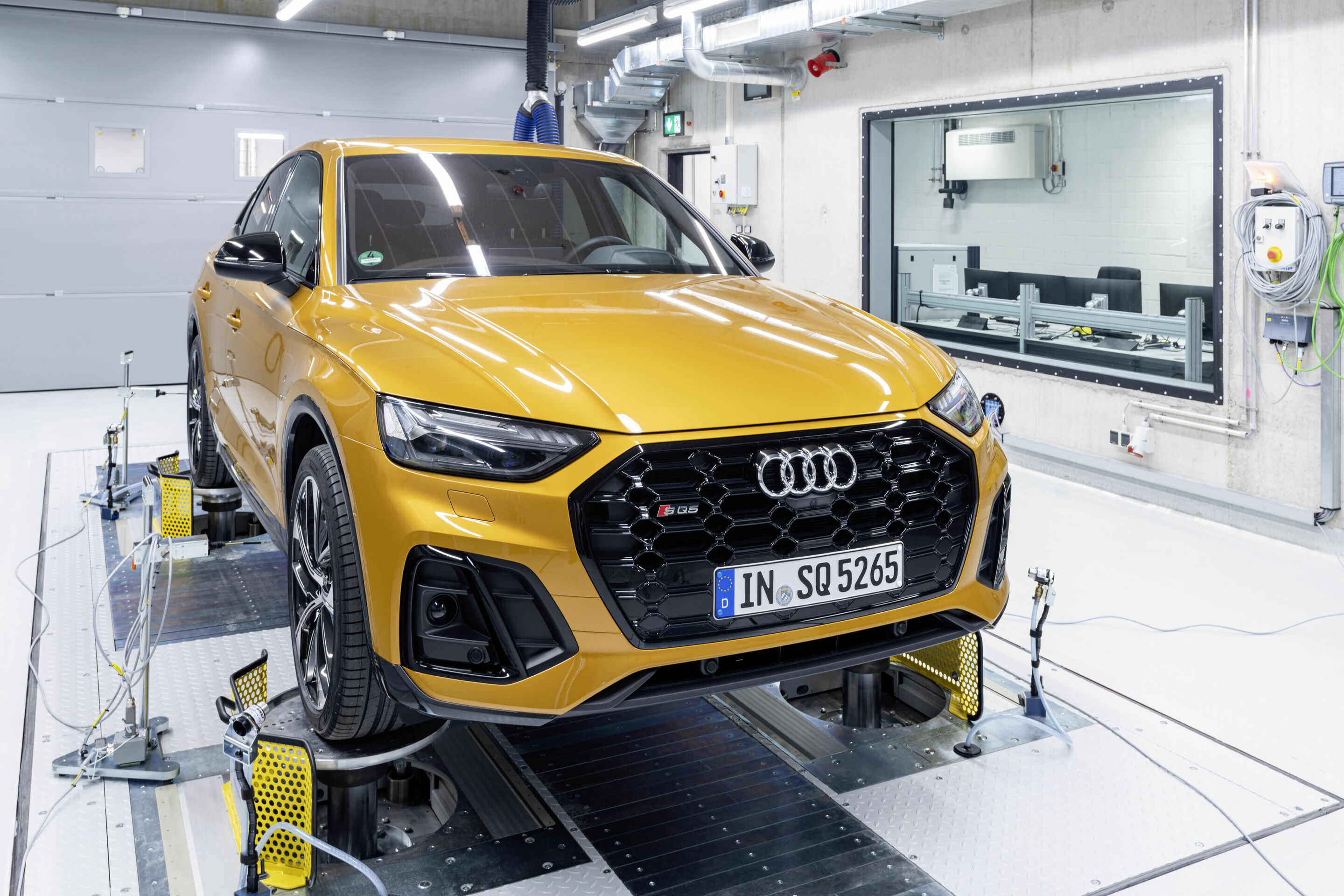Creaking, chirping, and humming:
how a special team localizes car background noise
Tracing, analyzing, and correcting disruptive noises in cars – that is the mission that Audi’s Rustle and Rattle team has dedicated itself to. For that purpose, the acoustics professionals send vehicles over vibration tracks and mix in hydropulse equipment and shakers that vibrate drastically. They use familiar, everyday vocabulary to name the noises that arise – but success in their work depends on making fine distinctions.
A strange noise is disrupting the feeling in the passenger compartment. It isn’t loud, but it is clearly audible. And it's coming from somewhere in the back of the car. This is a typical scenario for Audi’s acoustics specialists, who have given themselves the descriptive name the “Rustle and Rattle team.” The search for the cause often leads them through the entire vehicle. A noise can start at the front door of the vehicle, be carried to the back via components of the car, and only be audible at the C-pillar. In addition to such convoluted pathways, the team has to detect critical material pairings, obstruction problems, and the effects of aerodynamics in order to localize acoustic disruptions.
Which sounds are to be called squeak or rattle in technical jargon has been established for years at Audi. The expertise in the Rustle and Rattle team comes from complete-vehicle and body development as well as quality assurance. When necessary, they turn to specialists from other fields like production or engine and transmission development.
The team’s insights can have a wide range of different effects: sometimes they lead to change in component quality, other times their specialists discover production errors. Occasionally, they even find connections that are caused by the construction itself. That is why the team is included in vehicle development early on. That ensures that fewer and fewer disruptive noises arise in the interior despite increasing complexity in vehicle construction.
The technical facilities: vibration roller, hydropulse equipment, and shaker
Apart from experience and keen listening comprehension, the team is also invested in technical support. Members take measurements through drives on special vibration tracks with different uneven road surfaces and in actual road traffic. And they use tools that make the vehicles vibrate in order to identify possible sources for disruptive noises without needing to focus on driving at the same time. In the process, the professionals utilize vibration rollers in vehicle manufacturing, which can simulate, for instance, driving over cobblestones. In addition, they test selected vehicles on hydropulse equipment. This triggers a selectable frequency band that conveys impulses across the wheels and the chassis into the car. Because the intensity can also be varied this way, the Rustle and Rattle team can literally make almost everything vibrate and produce sound – an endurance test even for premium vehicles. A piece of equipment called the shaker functions similarly, except that it is used to initiate vibrations directly on the body of the car. This allows the team to avoid damping effects caused by tires, shock absorbers, and the chassis. Test stands make it possible to introduce the vehicle to stimulations under laboratory conditions that were previously recorded on the test track – without disruptive incidental conditions like wind, motor, or rolling noises and with the option of unlimited reproducibility.
Shared vocabulary: differentiated vernacular
The team has not invented any new terms to describe what strikes the human ear. It uses slang vocabulary, which it differentiates with supplements. Of course, exact classifications also depend on individual perception. But the Rustle and Rattlers understand each other perfectly: is a noise hard or soft? What can we compare the sound to? Is it coming from the inside or the outside? Do we hear it constantly or intermittently?
Similarities and overlaps are allowed because some terms describe the same sound, just with different characteristics. In any case, the diversity in the vocabulary is impressive:
- Bedrock
- Hum
- Drone
- Shimmer
- Snag
- Howl
- Rattle
- Jangle
- Crack
- Squeak
- Creak
- Crunch
- Crackle
- Whistle
- Whoosh
- Grind
- Rustle
- Clank
- Knock
- Buzz
- Scrape
- Whir
- Vibration
- Hum
- Chirp
- Hiss
- Sizzle
